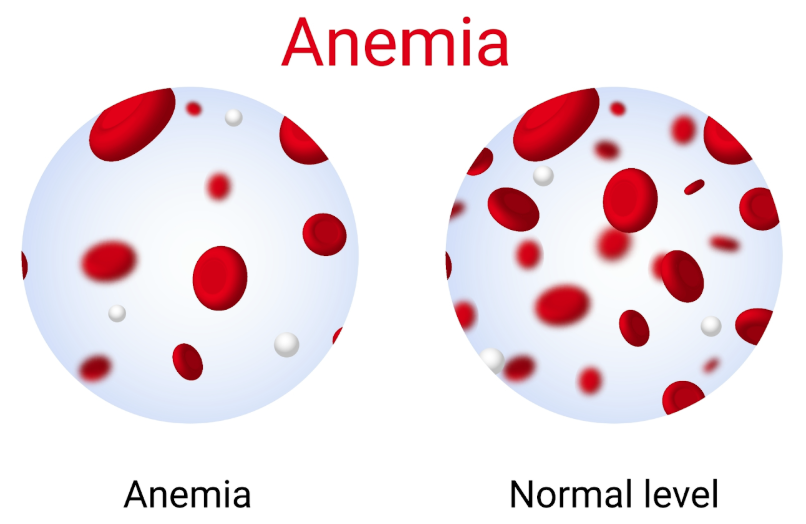
It’s IRONIC isn’t it. You’re doing all the little things. Hitting mileage goals, running recovery runs easy, keeping up with your little things and strength training and eating enough calories but for some reason, you just don’t feel recovered. This is deeply frustrating because you know your body is definitely missing something. But what could it be? You may have even gotten it tested, and you may have landed in the extremely large range of 30-300ng/mL. And most docs that don’t understand runners would probably pass it off as normal. Your symptoms persist, runs don’t feel easy, even at easy paces maintaining conversations is not easy. So, you continue your search, grasping for straws but you can’t find anything.
The truth is: Even if you are within the normal ranges for iron to be normal you must take into account that you are a performing athlete. This comes with an extra need. Just as you probably eat more than the average person to fuel the body, you also need to be making sure you are hitting your micronutrients as well. Iron is extremely important in the body. Let’s break it down.
The human body has roughly 27 trillion red blood cells each with 4 iron atoms. So over 100 trillion iron atoms in our blood.
Iron is lost in the sweat. So, if you sweat a lot à workout a lot this means more than average iron loss
Iron is a cofactor in the connective tissue healing system, so when we break down, iron helps reform healthy connective tissues.
Iron is what binds oxygen to transport to the cells for cellular respiration (metabolism)
Iron is lost on every foot strike called “Foot strike Hemolysis” as you run due to blood vessels being trampled, which then crushes the red blood cell resulting in 1-2mg per day loss.
Iron is stored in the form of Ferritin. When we are sick, especially with a virus, Ferritin stores can and will be depleted.
Iron is most absorbable in the heme form; non-heme iron is less absorbable.
The body reduces blood iron levels during infections. When the body is inflamed, the liver produces a hormone called Hepcidin. In the presence of Hepcidin, iron is not well absorbed. Hepcidin is produced during exercise and when the body is fighting an infection. So, it’s important when you take your iron supplement. Wait 8 hours post exercise or consume before exercise.
Another rule about the body is that it prefers to absorb compounds if they are reduced. Let’s make sense of this. The chemical sign for iron is Fe. So Fe3+ the “ferric” ion, is the form of elemental iron that exists in nature. Iron Fe2+ the “Ferrous” ion is preferred by the body. This becomes important when we supplement. You may have heard that we must take iron with vitamin C. This is because Iron needs a reducing agent to bring Fe3+ to Fe2+. Iron exists in 2 forms naturally, heme-iron and non-heme iron. Heme-iron is bound to either hemoglobin or myoglobin in RED meat animal sources and is the most absorbable form because it exists in the 2+ state. Non-heme iron exists in the 3+ charged state meaning it is less absorbable unless its charge is reduced by vitamin C. Non-heme iron has more reported GI issues.
Iron competes with other elements to be absorbed into the body. Calcium should not be consumed with iron if the goal is to increase iron storages. Leafy greens such as spinach should not be consumed with iron due to a high calcium content.
If you cook on a cast iron skillet you may be thinking you are getting adequate iron from cookware, but in reality, there is minimal iron transfer, unless cooking acidic foods. Fun fact: you have enough iron in the body to build a nail.
How to maximize iron absorption:
- Best source of iron: Heme iron (red meat, especially beef liver)
- Supplemental iron: Iron Bis-glycinate chelated
- When to take: Morning and evening on an empty stomach
- What NOT to do: consume dairy, or spinach with iron due to calcium content
- Things to help iron absorption: Vitamin C (ascorbate), Vitamin B6 (pyridoxine), Vitamin B9 (folate), Vitamin B12 (Methyl-cobalamin) and in the presence of carbohydrates
- Plant based or vegan iron: non-heme iron must be taken with vitamin C especially.
While there’s no official increase to the RDI for athletes, many sports nutritionists recommend at least: Men: 10–15 mg/day
Women: 18–25+ mg/day
It is recommended to get iron checked periodically at least 1 time per year and more especially if there is a history of iron deficiency. For athletes who have a history of deficiency, 3-4x per year is recommended. During treatments it may be done 6-8 times in a year to closely monitor iron levels. Even from supplementing iron in the form of iron bis-glycinate, the body only absorbs 15-25% of the consumed quantity. So, maximizing the intake is important. Heme iron from red meat sources is the most absorbable form 15-35%.
Let us know if you have any questions or concerns.
Ohio Sports Chiropractic and Rehab
📍 10360 Northfield Rd, Northfield, OH 44067
📞 (330) 908-0203
🌐 ohiosportschiropractic.com
